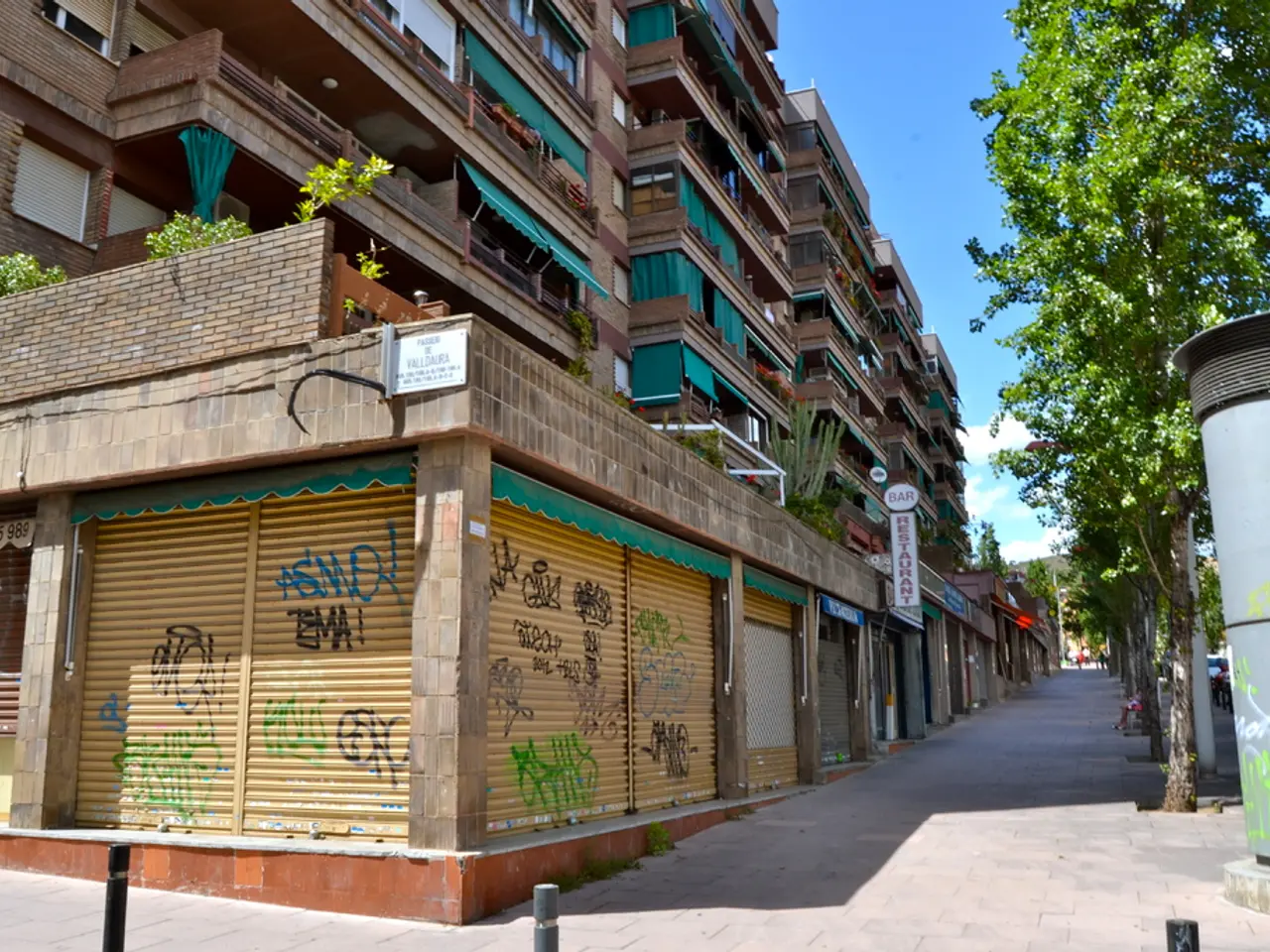Examining the Artist Behind Klimt Landscapes at the Neue Galerie: Revealing the Person Hidden in the Paint
In the heart of Manhattan, the Neue Galerie continues to be a sanctuary for Austrian and German art, with its latest exhibition, 'Klimt Landscapes', offering a unique glimpse into the life and work of Gustav Klimt.
The exhibit, which runs until June, is not just about formal paintings, but also about the man behind the canvas. Klimt spent his summers in the 1890s at Attersee lake in Austria, and his works from this period, including five landscapes, are on display. The paintings, characterised by a Pointillist style and vibrant colours, show Klimt's obsession with documenting Attersee on paper, including the village, chapels, forests, and flowers.
Emilie Flöge, the sister of Klimt's brother's wife Helene, is highlighted in the exhibit. She was a longtime muse, collaborator, and friend to Klimt. Their relationship was unconventional and likely non-romantic in the traditional sense, but deeply connected through art and mutual inspiration.
Flöge was herself an Austrian fashion designer and the sister of Klimt's sister-in-law. She appears as a subject or inspiration in some of Klimt's works, sometimes possibly in disguised or symbolic form. Klimt's landscapes, such as those in the Neue Galerie, show techniques—like flattening perspective and mosaic-like brushstrokes—that echo the decorative, patterned aesthetic also found in portraits inspired by or connected to Flöge’s fashion designs.
One of the highlights of the exhibition is an original Reform dress, designed by Flöge. The exhibit also includes collotype photographs from the collection "Das Werk von Gustav Klimt", divided amongst the three galleries, and 26 such photographs are part of the exhibit. A collotype of Klimt's 1903 Portrait of Emile Flöge is present, which was one of Klimt's earliest decorative portraits.
The influence of photography on Klimt's paintings is also evident in the exhibit, particularly from members of the famed Vienna Camera Club. Klimt began experimenting with gold leaf in his art, resulting in masterpieces like the 1907 Portrait of Adele Bloch Bauer I.
The paintings in the exhibit have been criticized by some as being mediocre in comparison to Klimt's other works. However, the exhibit offers a unique opportunity to delve into the lesser-known aspects of Klimt's life and work, and the role of his personal relationships in shaping his artistic vision.
The exhibit also features many furnishings from the Flöge sister's shop, Schwestern Flöge, a fashion-forward design store that catered to the Viennese upper echelon. Many of these pieces, along with original family photographs, Klimt reproductions, Wiener Werkstätte jewelry, and 19th century evening attire, provide a fascinating insight into the world that inspired Klimt's work.
In summary, the 'Klimt Landscapes' exhibit at the Neue Galerie offers a unique opportunity to explore the lesser-known aspects of Klimt's life and work, particularly his relationship with Emilie Flöge. The exhibit showcases the interplay of natural form and ornamentation in Klimt's works, a style he developed alongside his personal ties to Flöge. It is a must-see for any art enthusiast.
[1] Neue Galerie. (n.d.). Klimt Landscapes. Retrieved from https://www.neuegalerie.org/exhibitions/klimt-landscapes [2] Neue Galerie. (n.d.). Emilie Flöge. Retrieved from https://www.neuegalerie.org/collection/emilie-floge [3] Neue Galerie. (n.d.). Gustav Klimt. Retrieved from https://www.neuegalerie.org/collection/gustav-klimt [4] Neue Galerie. (n.d.). Emilie Flöge and Gustav Klimt. Retrieved from https://www.neuegalerie.org/collection/emilie-floge-and-gustav-klimt [5] Neue Galerie. (n.d.). The Large Poplar Tree II. Retrieved from https://www.neuegalerie.org/collection/the-large-poplar-tree-ii
- The 'Klimt Landscapes' exhibit at the Neue Galerie provides a unique look into the life and work of Gustav Klimt, particularly his relationship with Emilie Flöge, showcasing the interplay of natural form and ornamentation in his works. [Neue Galerie]
- The exhibit features an original Reform dress designed by Emilie Flöge, as well as collotype photographs from the collection "Das Werk von Gustav Klimt", providing a fascinating insight into the world that inspired Klimt's work. [Neue Galerie, Emilie Flöge, Collotype Photographs]
- The paintings in the exhibit, such as "The Large Poplar Tree II," demonstrate Klimt's obsession with documenting Attersee on paper, characterized by a Pointillist style and vibrant colors. [Klimt Landscapes, Pointillist Style, Vibrant Colors, The Large Poplar Tree II]
- The 'Klimt Landscapes' exhibit also includes furnishings from the Schwestern Flöge shop, offering a glimpse into the life of the Viennese upper echelon that influenced Klimt's work. [Neue Galerie, Schwestern Flöge, Viennese Upper Echelon]







